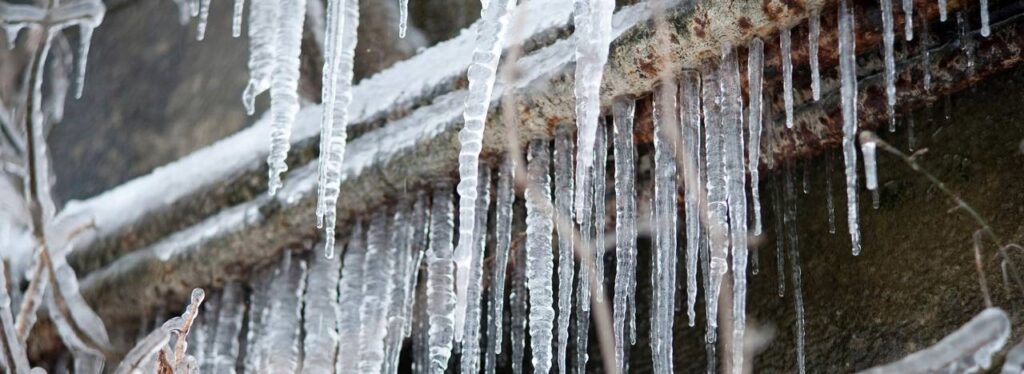Crucial Advice to Prevent Frozen Pipes in Cold Weather: Expert Insights
Crucial Advice to Prevent Frozen Pipes in Cold Weather: Expert Insights
Blog Article
What're your thoughts about 6 Ways to Prevent Frozen Pipes?

Winter can ruin your pipes, especially by freezing pipelines. Below's exactly how to avoid it from happening and what to do if it does.
Introduction
As temperature levels decrease, the danger of frozen pipelines boosts, potentially leading to costly fixings and water damages. Understanding just how to avoid frozen pipelines is important for homeowners in cool climates.
Understanding Icy Pipes
What creates pipes to ice up?
Pipelines freeze when subjected to temperature levels below 32 ° F (0 ° C) for prolonged durations. As water inside the pipes ices up, it increases, putting pressure on the pipeline wall surfaces and potentially triggering them to break.
Risks and damages
Icy pipelines can result in water system disruptions, home damages, and pricey repairs. Burst pipes can flood homes and trigger extensive structural damages.
Signs of Frozen Piping
Recognizing icy pipelines early can stop them from breaking.
Just how to recognize icy pipelines
Look for decreased water flow from taps, uncommon smells or sounds from pipes, and noticeable frost on revealed pipes.
Prevention Tips
Insulating susceptible pipelines
Cover pipes in insulation sleeves or make use of heat tape to protect them from freezing temperatures. Focus on pipes in unheated or exterior areas of the home.
Heating techniques
Keep interior spaces sufficiently warmed, specifically locations with plumbing. Open closet doors to enable cozy air to distribute around pipelines under sinks.
Safeguarding Outside Pipes
Garden pipes and exterior faucets
Disconnect and drain yard tubes before winter season. Set up frost-proof faucets or cover outdoor faucets with shielded caps.
What to Do If Your Pipes Freeze
Immediate activities to take
If you think frozen pipelines, maintain faucets available to ease stress as the ice melts. Make use of a hairdryer or towels soaked in warm water to thaw pipelines gradually.
Long-Term Solutions
Architectural modifications
Take into consideration rerouting pipelines away from exterior walls or unheated areas. Include added insulation to attic rooms, cellars, and crawl spaces.
Updating insulation
Purchase top quality insulation for pipes, attic rooms, and walls. Correct insulation helps preserve consistent temperature levels and decreases the danger of frozen pipelines.
Final thought
Stopping icy pipelines requires proactive measures and quick actions. By recognizing the reasons, indicators, and safety nets, home owners can safeguard their pipes throughout winter.
5 Ways to Prevent Frozen Pipes
Drain Outdoor Faucets and Disconnect Hoses
First, close the shut-off valve that controls the flow of water in the pipe to your outdoor faucet. Then, head outside to disconnect and drain your hose and open the outdoor faucet to allow the water to completely drain out of the line. Turn off the faucet when done. Finally, head back to the shut-off valve and drain the remaining water inside the pipe into a bucket or container. Additionally, if you have a home irrigation system, you should consider hiring an expert to clear the system of water each year.
Insulate Pipes
One of the best and most cost-effective methods for preventing frozen water pipes is to wrap your pipes with insulation. This is especially important for areas in your home that aren’t exposed to heat, such as an attic. We suggest using foam sleeves, which can typically be found at your local hardware store.
Keep Heat Running at 65
Your pipes are located inside your walls, and the temperature there is much colder than the rest of the house. To prevent your pipes from freezing, The Insurance Information Institute suggests that you keep your home heated to at least 65 degrees, even when traveling. You may want to invest in smart devices that can keep an eye on the temperature in your home while you’re away.
Leave Water Dripping
Moving water — even a small trickle — can prevent ice from forming inside your pipes. When freezing temps are imminent, start a drip of water from all faucets that serve exposed pipes. Leaving a few faucets running will also help relieve pressure inside the pipes and help prevent a rupture if the water inside freezes.
Open Cupboard Doors
Warm your kitchen and bathroom pipes by opening cupboards and vanities. You should also leave your interior doors ajar to help warm air circulate evenly throughout your home.

I was shown that article about Preventing and dealing with frozen pipes from someone on our other web property. Those who appreciated our page plz don't forget to pass it around. Thanks so much for your time invested reading it.
Book An Estimate Now Report this page